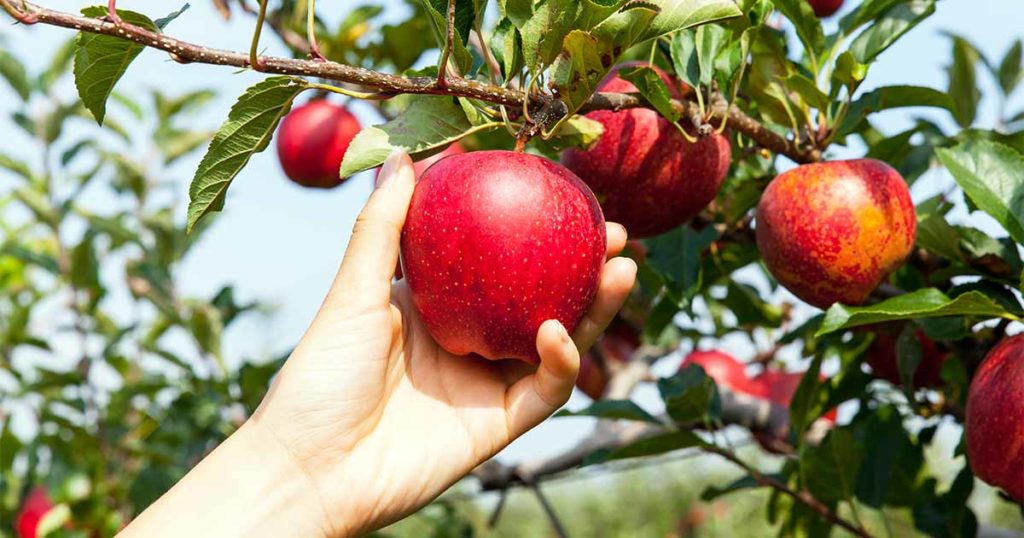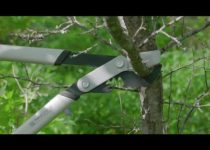Apple Tree Tips

Too Many Apples Can Be A Problem – The goal is usually to increase the number and size of apples on a tree. At times, especially on mature trees, you may get too many apples. When this is the case the apples are apt to be too small, or if they are normal sized, you either have to prop up the branches to avoid breakage, or do some thinning out. Breakage of this type is especially likely to occur if you’ve allowed vertical interior branches to grow and they become overburdened with fruit. When you are pruning apple trees in the winter, remember that fruit grows on old growth, and by cutting the old growth back to just a few spurs, you should reduce the number of apples the tree will bear. You’ll most likely end up with enough apples, but they should be larger apples. One big apple is better than three tiny ones at any time.
Train That Tree!
Can an apple tree be trained? Certainly. Like training a dog, you’ll get a better response when the subject is young. By training an apple tree we mean, of course, pruning it to direct its growth in the desired directions and pattern. A mature tree that has been neglected is a little harder to train, as it has become set in its ways. All is not lost, however, but you may have to do some major pruning to get the tree back into the desired shape. There may be some large branches or major sections that have to be cut away The difference between training apple trees and pruning apple trees is really that training is, in a sense, preventive pruning. A well-trained tree will usually require less extensive pruning on an annual basis.
By a well-trained apple tree, we mean one that has a primary leader, and scaffolding branches extending more or less horizontally from the leader. Some of these horizontal branches will eventually become quite large, with other scaffolding branches extending out from them. These branches grow in somewhat of an upward direction making it easier for them to handle large loads of fruit. When pruning apple trees, don’t forget to cut back the top, by a few feet if necessary. While there’s nothing wrong with a high tree, it can make harvesting the crop a little more difficult, plus the larger the tree, the bigger the job pruning and training becomes. The correct height of the tree though is the height you’re comfortable with. What you don’t want is to have the height determined by a large number of interior vertical branches. Train the tree as it grows.
Pruning A Young Tree
We’ve talked mainly about mature trees to this point. What about pruning apple trees that you’ve just brought home from the nursery? These trees are often “whips”, a single vertical stick with no branches. Unless the whip has been pre-trimmed, you want to cut it back to about 3 feet in height. This constitutes your initial pruning adventure and is enough to get things started. Cutting the whip back will encourage the growth of lateral or scaffolding branches.
The bud that forms at the top will become the central leader of the tree and you’ll base future pruning and training around this leader. If your new tree has a few side branches, you still want to cut the top back, plus cut off branches near the ground, and cut back the other branches to 2 or 3 buds. This will get you started on a tree that will be pyramid shaped at first, which is what you want.
Your new tree should develop several side branches during the first growing season. After the tree has gone dormant, in mid-winter, you can cut some of the side branches off, leaving the two or three strongest ones. Cut the remaining branches back slightly. As the tree grows during the following season you can keep more scaffolding branches and prune away crossing branches, suckers, and the like. Now you have a well-trained tree. A well-trained tree is a happy tree.

